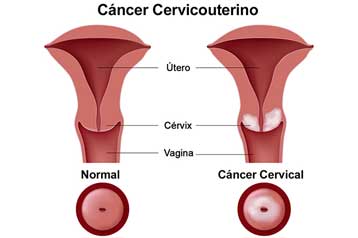Commonly used fertility drugs
-
Clomifene citrate
-
Metformin
-
Pulsed gonadotrophin-releasing hormone -GnRH
-
Follicle-stimulating hormone (FSH)
-
Nafarelin Buserelin and Goserelin
-
Cetrotide and Orgalutran
-
Progesterone
-
Bromocriptine
Clomifene citrate (Clomid)
Clomid is used primarily in women who ovulate irregularly or not at all and in some cases of unexplained infertility. For women aged 35 and older, it is advisable to undergo a complete fertility evaluation prior to beginning Clomid therapy. Sometimes fertility declines very rapidly in this age group.
How it is taken: In pill form (one - four tablets a day between day two –six of the cycle).
Effect: Indirectly stimulates ovaries into producing eggs.
What it is for: To stimulate and / or regulate ovulation.
Possible side effects: Hot flushes, mood swings, nausea, breast tenderness, insomnia, increased urination, heavy periods, spots, weight gain. May also increase ovarian cancer risk slightly if taken for over a year.
Metformin
Metformin is being used to treat anovulatory (don’t ovulate) women with polycystic ovarian syndrome (PCOS), a relatively common cause of female infertility. Between 40-70% of women with PCOS will be hyperinsulinemic meaning they have chronically elevated insulin levels.
Metformin does not stimulate, or cause, ovulation like other fertility drugs including Clomid and FSH. It establishes a correct physiologic balance by causing insulin production to decrease to normal levels. When this is achieved, the ovaries no longer “over produce” androgens and ovulation will often resume.
For women with PCOS, metformin has been shown to decrease miscarriages, improve pregnancy rates and decrease the risk of gestational diabetes mellitus. Long term benefits of metformin include decrease in the risk of diabetes mellitus, improvement of hyperandrogenism, includinghirsutism, and normalizing the menstrual cycle.
How it is taken:Tablets with build up of dosage to two – three tablets per day.
Effect: Used in the treatment of polycystic ovary syndrome, particularly for obese patients.
What it is for: Can stimulate ovulation.
Possible side effects: Nausea, vomiting, diarrhoea, abdominal pain, metallic taste, itching, allergic reactions and rarely hepatitis.
Pulsed gonadotrophin-releasing hormone -GnRH (including – Gonadorelin)
How it is taken: Small pump, usually on upper arm, injects pulses into bloodstream.
Effect: Triggers egg production.
What it is for: Ovulation failure caused by lack of GnRH(used rarely).
Possible side effects: Stomach pains, sickness and nausea, heavy periods, headaches.
Follicle-stimulating hormone (FSH), Gonal-F, and Puregon Luteinizing hormone (LH), such as Menogon, Menopur and Merional
FSH causes the recruitment, and supports the development, of the ovarian follicles, each of which contains an egg. The pituitary gland produces FSH after it is stimulated with gonadotropin releasing hormone (GnRH), which is released by the hypothalamus.
Injectable FSH is used in assisted reproductive technology cycles, usually for 7-10 days, to stimulate the recruitment and development of multiple eggs, which are needed for procedures such as in vitro fertilization (IVF) and IVF/ICSI.
How it is taken: Injections (one per day). When eggs are mature, you are given an injection of human chorionic gonadotrophin (hCG) hormone to trigger release of an egg(s).
Effect: Stimulates the ovaries to produce eggs.
What it is for: To stimulate ovulation before treatment cycles, or for polycystic ovary syndrome (PCOS) where Clomid hasn’t worked. Also for infertility due to pituitary gland failure and some male infertility.
Possible side effects: Over-stimulation of the ovaries (OHSS); risk of multiple pregnancy when used for ovulation induction, allergic reactions and skin reactions. The most severe adverse effect associated with FSH is ovarian hyperstimulation syndrome (OHSS) which occurs in approximately 1% if cases. These drugs must always be administered by a specialist (reproductive endocrinologist) thoroughly trained in their use.
Drugs to regulate your treatment cycle:
During treatment, your doctor will usually prescribe other drugs for you to take at various times to give more control over your treatment cycle. These may include:
Nafarelin Buserelin and Goserelin (also know as: Gonadotrophin- releasing hormone (GnRH) analogues or pituitary agonists)
How it is taken: Nasal spray, several times daily, or as daily injections or monthly depo (injected under the skin) before, or at the same time as, fertility drugs.
Effect: Block natural release of hormones that regulate the natural monthly cycle. Produce low levels of FSH, LH and oestradiol.
What it is for: To stop the natural menstrual cycle.
Possible side effects: Hot flushes, night sweats, headaches, vaginal dryness, mood swings, changes in breast size, breakouts of spots, acne and sore muscles.
Gonadotrophin- releasing hormone antagonists (Cetrotide and Orgalutran)
How it is taken: Daily subcutaneous (under the skin) injection.Given at the same time as FSH injections.
Effect: Unlike the pituitary agonists above, these drugs offer the alternative of blocking the release of FSH and are administered while the ovaries are stimulated to produce eggs in an IVF treatment cycle.
What it is for: Stop ovulation until eggs are ready to be collected as part of the IVF cycle.
Possible side effects: Nausea, headache, injection site reactions, dizziness and malaise.
Progesterone (including Cyclogest, Gestone, Crinone or Progynova)
Progesterone is a hormone that supports the development of the endometrium, which is the lining of the uterus. The endometrium must thicken and become more vascular to support the growth of a developing embryo. When the endometrium does not develop properly it is sometimes due to inadequate progesterone during the luteal phase, known as a luteal phase defect.
Once the follicles mature and are ovulated, the remaining follicular structure on the ovary is known as the “corpus luteum”. The corpus luteum begins production of progesterone to support initial embryonic development. Once the placenta forms it begins progesterone production to support the growth of the fetus. IVF patients receive progesterone because medications such as Lupron or Ganirelex interfere with its natural production.
How it is taken: Either after the injection of the pregnancy hormone, hCG, or on the day embryos are returned to the womb, as a vaginal suppository, a pill, gel or by injection into the buttock.
Effect: May help to maintain pregnancy after IVF or IUI.
What it is for: To thicken the lining of the womb in preparation for nurturing a possible embryo.
Possible side effects: Nausea, vomiting, swollen breasts.
Bromocriptine
Once a woman becomes pregnant, the pituitary gland increases the production of prolactin, which is known as the "breast milk" hormone. As the name implies, prolactin is responsible for stimulating the production of breast milk in pregnant women.
When the prolactin level is elevated in women who are not pregnant, the condition is known as hyperprolactinemia, which can lead to irregular, or no ovulation. In some cases, hyperprolactinemia is caused by a small non-malignant tumor within the pituitary gland. When a tumor is present, surgical removal is usually the "first line" treatment. In other cases, bromocriptine is administered to medically lower prolactin levels.
How it is taken: Tablets.
Effect: Reduces high levels of Prolactin hormone.
What it is for: High prolactin can interfere with production of and the affect of FSH. Has a place even in IVF if Prolactin level is high.
Possible side effects: Nausea, headache, constipation, dry mouth, skin reactions, hair loss, lowering of the voice.






